Small Boats Annual 2014

Spindrift 12
A performance yacht tender
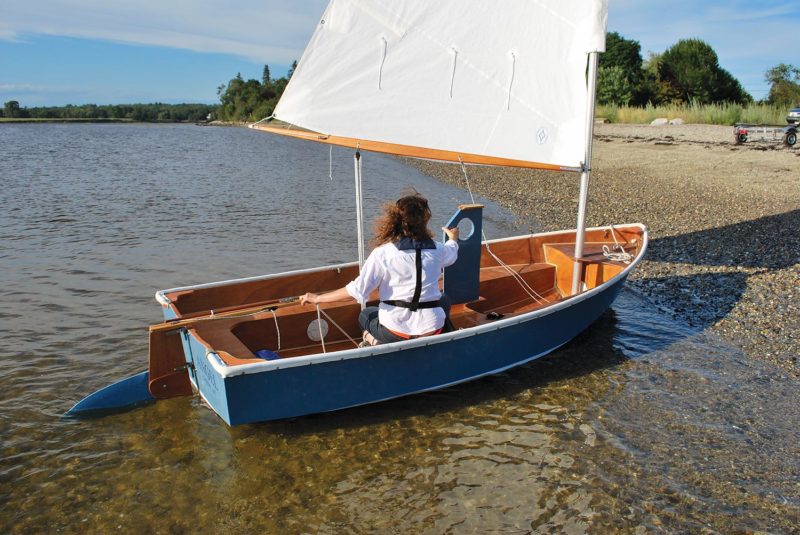
The Spindrift series of dinghies from B&B Yacht Designs promises a range of capable yacht tenders that offer plenty of sailing excitement. Here we see a 12’ model built by Meredithe Stuart-Smith of Castine, Maine.
H ere we have one member of a family of boats—four in all—doing business under the name of Spindrift and designed by Graham Byrnes of Vandemere, North Carolina. The very first Spindrift was a 10-footer, and was meant purely as a tender to a larger yacht. As Byrnes tells the story on his website, “Not long after the first few were built, we were invited to take part in a race for yacht tenders with a maximum length of 10′. There were dinghies of every description: Trinkas, Connies, Dyers all were represented, as well as some less-well-known brands—and a few custom boats.”
Spindrift trounced the fleet—so much so that there was a mass exodus of dinghies from the local yacht club, and a flurry of Spindrift construction. The word spread to other parts of the country, and more models followed. Today, the lengths are 9′, 10′, 11′, and 12′, and you can choose nesting versions for all but the 12-footer. “Nesting” refers to the boat’s ability to be separated into two pieces—a bow and stern section—with the bow portion turned around and nestled into the stern sections. The result is a tidy package that can be carried on the deck of a small yacht. The rig options include a cat for the 9′, 10′, and 11′ models, and sloop or cat for the 11′ and 12′ ones. To date, Byrnes has sold 1,025 sets of plans.
“A Spindrift,” writes Byrnes, “is a very good investment if you have a junior sailor in your family. Unlike many dinghies used as trainers (such as the Optimist), you do not ‘outgrow’ a Spindrift. While the boat is very suitable for children and inexperienced adults, in the hands of a good competitive sailor it offers the challenge of top-end racing.” Byrnes also intended for the boat to carry a small outboard, which he says it does very well.
The forgiving nature of the boat and its top-end potential are what drew Meredithe Stuart-Smith to Spindrift. A resident of Castine, Maine, Stuart-Smith had taken a sailing course at WoodenBoat School several years ago, and now she wanted a boat in which to hone her new sailing skills. What boat, she wondered, would be adequate for the local conditions, and under 12′ so she could store it on land at the local yacht club? She called Graham Byrnes’s shop and spoke with his wife, Carla, who mentioned the Spindrift—which, as it happened, was to be the subject of an upcoming class at WoodenBoat School.
Stuart-Smith was intrigued, but a little concerned about her limited capacity with woodworking tools, and she shared this concern with Carla.
“Honey,” Stuart-Smith recalls Carla responding, “there are women who could not get out of their Maiden form bras who could build one of these.”
“So,” says Stuart-Smith. “I came, I built, and I sailed.”
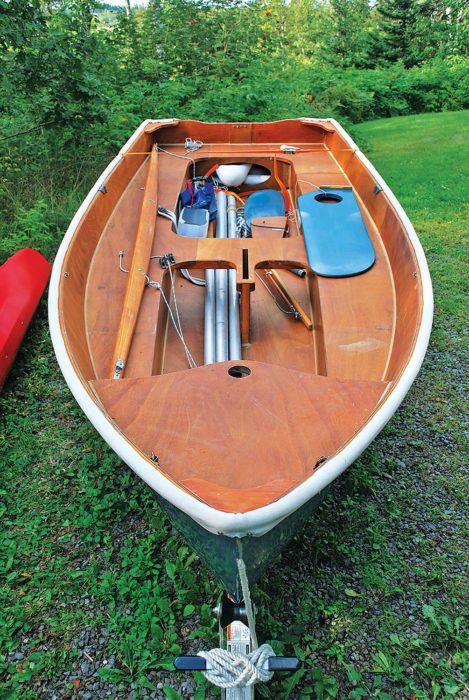
The 12′ Spindrift’s spars and blades all stow tidily in the boat for easy trailering.
T he construction is stitch-and-glue—a process that has as much in common with sewing as it does with traditional boatbuilding. In sewing, the curved edges of flat sheets of fabric are stitched together to yield a sometimes-complex three-dimensional shape. In stitch-and-glue boatbuilding, flat sheets of plywood are cut to precisely curving shapes, and the edges of them “sewn” together to yield a hull. The sewing is commonly done with copper wire or cable ties, and the seams are then “taped” together with fiberglass set in epoxy. There are nuances in this gluing-together job, such as the filleting of seams to eliminate hard inside corners and allow the ’glass to properly bridge the joint, but the process is rather simple and the rewards quick. Hulls are often stitched together in a day—though require much more work to make them solid and strong.
Stuart-Smith finished her hull in the WoodenBoat School class. After that, the demands of business and family life took over, and she sent the boat to Salt Pond Rowing, a shop operated by WoodenBoat School shop assistant Joe Thompson, who finished it—complete with a distinctive and flawless gunsmoke-blue paint scheme. “I’m sad I didn’t finish the boat,” says Stuart-Smith. “But I knew I couldn’t get it done.”
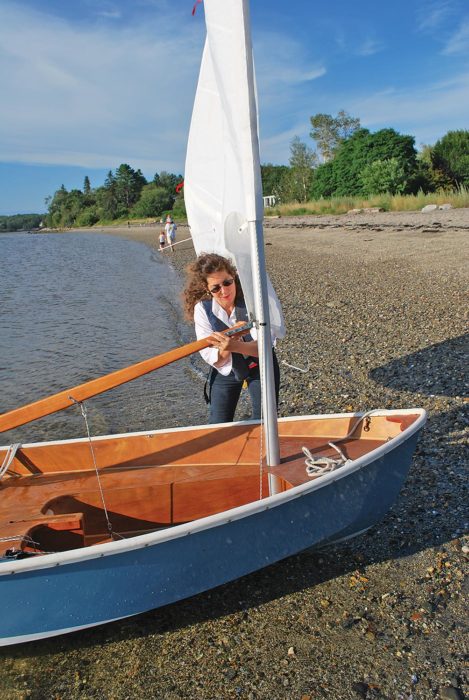
The 12′ Spindrift’s two-piece, unstayed aluminum mast is quick and easy to step, and the wooden boom attaches at the gooseneck with a simple slip-on fitting. Rigging takes a matter of minutes.
S tuart-Smith named the boat ANGEL, and four years after its launching, I joined her for a couple of sails from the backshore beach in Castine. This gravelly strand faces west into upper Penobscot Bay, and we arrived at high tide one August evening in a fresh westerly. Setup was easy. The aluminum mast separates into two sections, which stow neatly and entirely in the boat. The top mast section has a wooden plug inserted in its top. These two sections are easily joined together, and the lightweight spar dropped through the partners and into the step. There is no standing rigging.
The rig is a Bermudan cat, and the sail’s luff is sleeved, like a Laser’s. But unlike that ubiquitous Bruce Kirby–designed board boat—at least the ones I knew growing up—this luff sleeve has a zipper running its length, allowing the sail to be hoisted up the stepped mast, rather than threaded onto the mast on the ground, and the whole thing raised together. That made a big difference in ease of rigging in the breeze that was blowing that evening, for raising that sail Iwo Jima style would have required some manhandling. The zippered luff also allows for quick reefing and shaking-out from the helm position—which is not possible with a standard sleeve luff.
The clew is left to fly while the boat is launched and the boom attached to the gooseneck. Then the rudder is secured, the boat is pointed into the wind, and the outhaul made off. The engine, so to speak, is now idling.
I thought that getting off the beach in the onshore breeze would be a bit awkward—a reflection on me, and not the boat. In the past, I have found daggerboards can be ungainly in this situation. When beam-reaching into a beach, it’s good to have a little bit of blade exposed underwater for as long as possible. And I like to have the board propped in the trunk, ready to press into deep water, when departing in an offshore breeze. But in some of the boats of my youth, the height of that loaded board could impede the progress of the boom across the boat’s centerline, creating an interesting situation—one not unlike the time my ’75 Ford Grenada’s accelerator pedal got stuck under the floor mat as I was cruising down the Nahant causeway in Massachusetts in my high-school years…but I digress. My point is that Byrnes’s careful fitting of the board to clear the boom gave me confidence in the setup. This is a carefully engineered rig— mindful of both the beginner and advanced sailor.
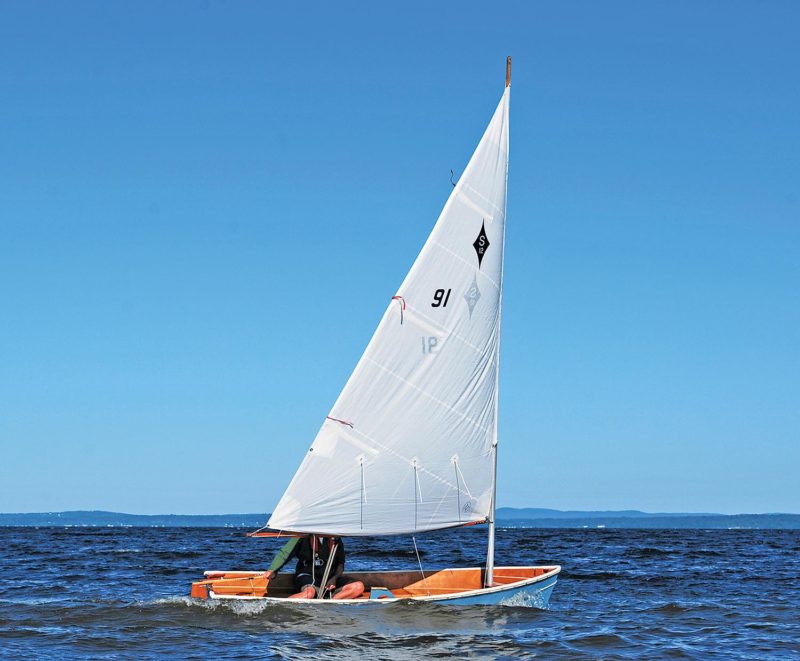
Spindrift has a rare combination of traits: Exciting sailing, good rowing, and ample volume to serve as a yacht tender. The designer claims that she handles an outboard motor well, too, though this wasn’t tested for this review.
I got away from the beach, deployed the centerboard, sheeted in, and whoosh: Stuart-Smith had told me that the local kids likened the feeling of her boat to a Laser’s—which I hadn’t sailed for decades. This brought it all back. The boat accelerated quickly, and I settled into the tack and tidied up the mainsheet. Then I tried a few turns. The boat was quick to tack, and sure-footed in jibes.
Stuart-Smith had told me earlier that every one of her sailing outings is like Groundhog Day, referring to the Bill Murray movie in which the protagonist awakes every day to the same circumstances, his life never advancing. She typically sails the boat with a more experienced hand along, and on one solo outing did have the distinct and enlightening pleasure of capsizing. She reports that it was easy to right, and came up only partially filled with water. Much of the interior volume is taken up by the flotation tank seats, so there was minimal bailing. Stuart-Smith has pushed through insecurities about a solo outing, saying that she’s “always doing things that terrify me.” She was bound and determined to take a few passes along the beach that night. And she did. As is often the case in learning, she’d internalized more of the previous year’s lessons than she’d thought. She’d developed instinct. This was proven out in one particular incident when, after the boat was caught in the wind while departing the beach, the sails filled as ANGEL sat still. That’s often the sitting-duck position for a capsize, as all of the sudden wind energy is pressing the boat over, and little or none of it is bleeding off in forward motion. Stuart-Smith leapt to the high side, settled the boat down, and darted off. The rest of the evening was textbook sailing, and putting the boat up took only ten minutes. We lowered the sail, hauled the boat up the beach on its aluminum trailer, popped out the mast, and secured the blades and spars in the bilge. With the hull strapped down, Stuart-Smith and ANGEL headed for the barn.
B&B Yacht Designs, 196 Elm St., Vandemere NC; www.bandbyachtdesigns.com.
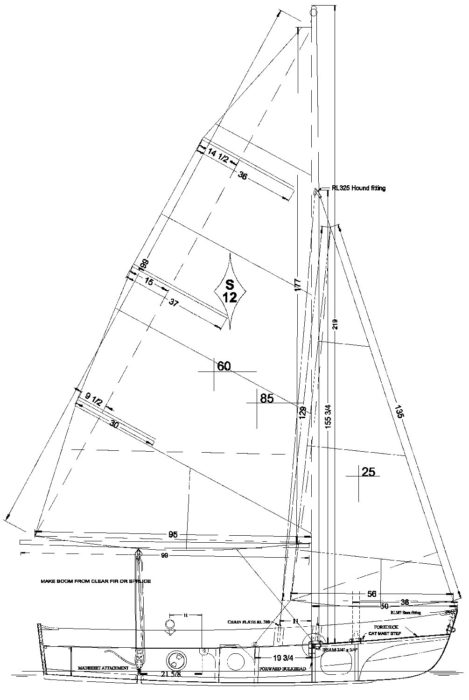
The Spindrift dinghy from B&B Yacht Designs is available in four lengths: 9’, 10’, 11’, and 12’. Here we see the 12-footer, the boat tested for this article, with the optional sloop rig.
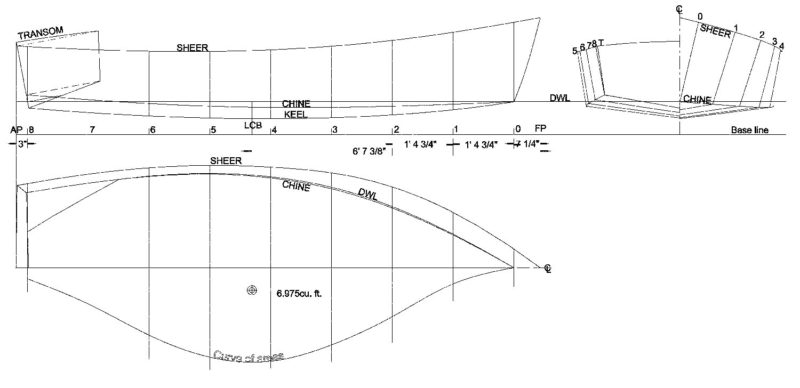
Particulars: LOA 12’0″ Beam 4’6″ Sail area (sloop rig) 85 sq ft (cat rig) 70 sq ft Weight 95-120 lbs
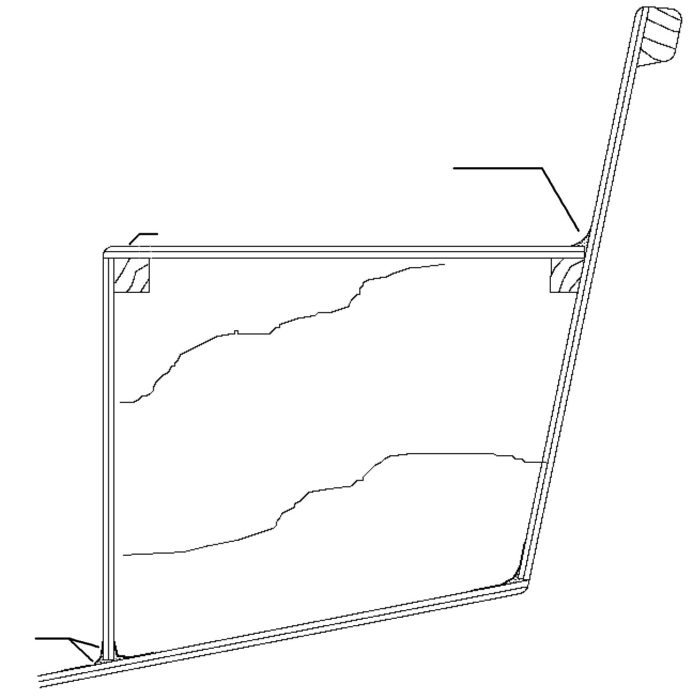
Share this article
Join The Conversation
We welcome your comments about this article. If you’d like to include a photo or a video with your comment, please email the file or link.
Comments (2)
Let’s shorten the mast by 2′,extend the boom by the same amount. With the original sail plan you still must duck under the boom.Why not make the boom longer? The sail plan lower?
A tall, thin sail, a high-aspect ratio, is more efficient. I had a plastic window sewn in.
Leave a Reply Cancel reply
Your email address will not be published. Required fields are marked *
Stay On Course
More From This Issue
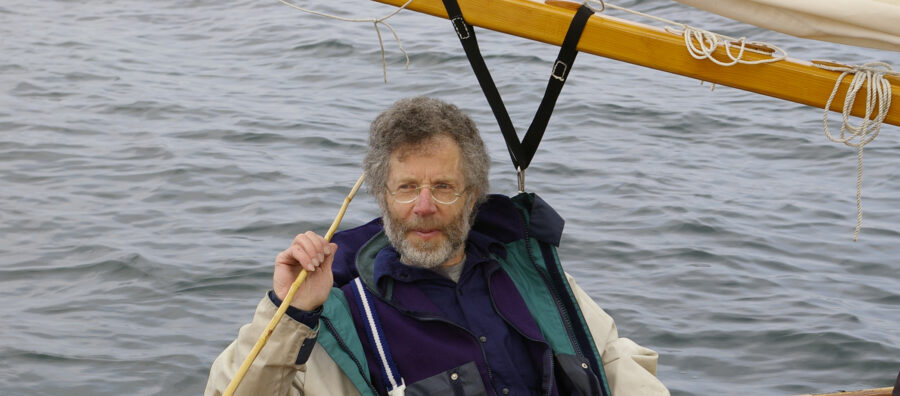
From The Editor
Iain Oughtred
Iain Oughtred, the Australian-born boat builder and designer whose boats frequently appeared in Small Boats, passed away on February 21, at the age of 85, in a hospital near his…

Boat Profile
Caledonia Yawl II
The original Caledonia Yawl, a rugged 19′ 6″ double-ended beach boat designed by Iain Oughtred for clinker plywood construction, has four strakes; this second iteration has seven, and was originally…
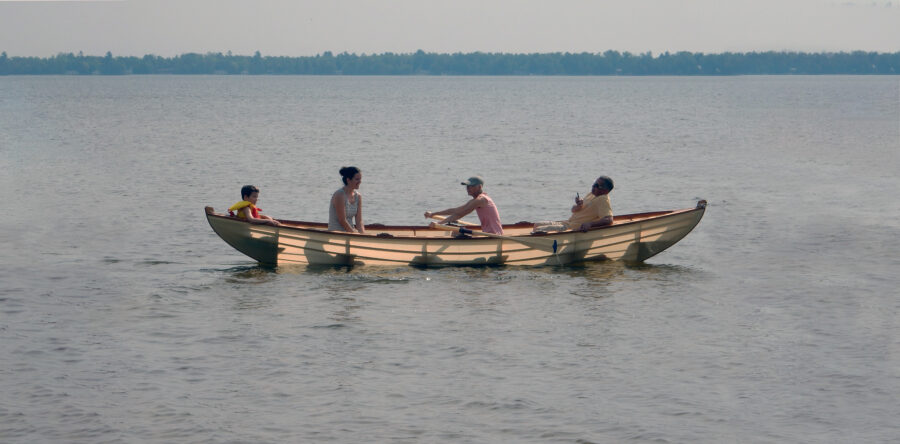
Chamberlain Gunning Dory
I looked online for an easy-to-build rowboat that we could use for exploring local lakes and rivers, and perhaps, some camp-cruising. I came across Dave Gentry’s Chamberlain Gunning Dory, based…

The Åland Islands
It was August, and under a brilliant blue sky we were off to explore the islands of Åland, the autonomous region at the southernmost tip of Finland where Swedish is…
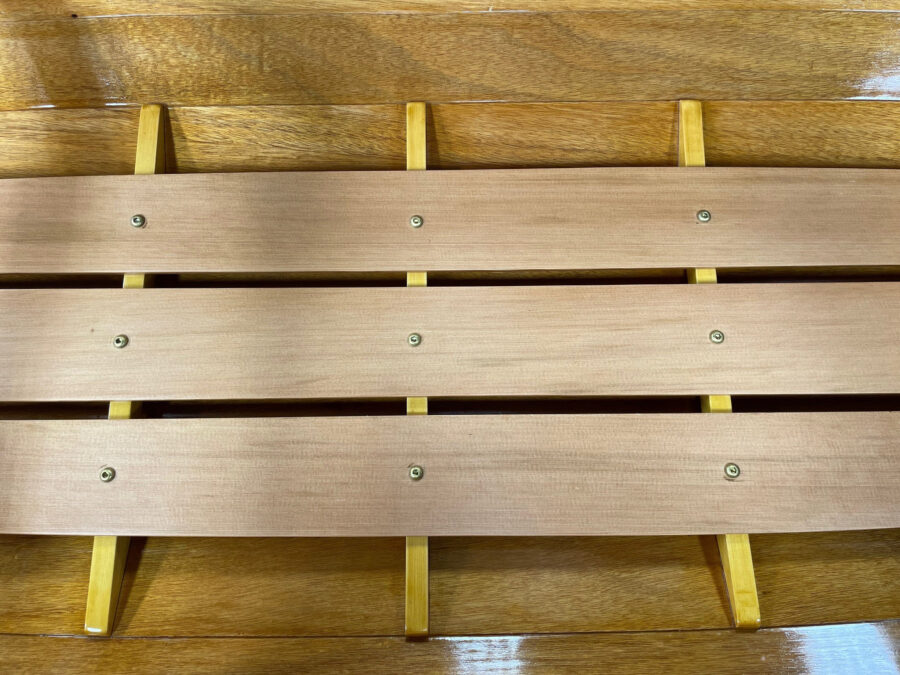
Fastening Floorboards
Wood screws can hold floorboards in place, but they’re not suited for being removed and reinserted. Wooden turn-buttons are an effective approach in many cases, but in smaller craft, where…
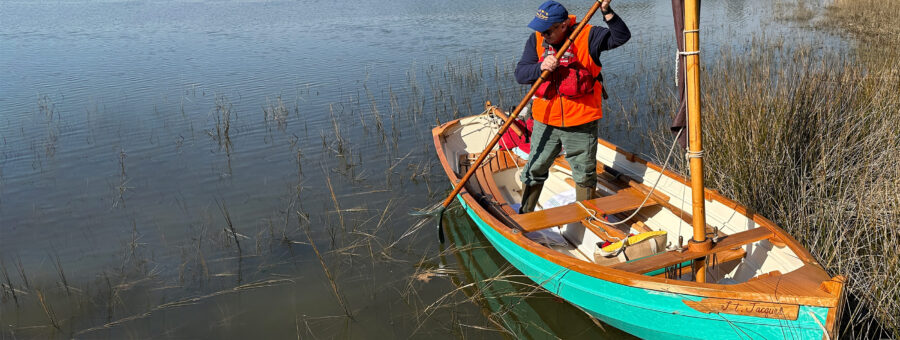
Product Reviews
A Duckbill for a Push Pole
The push poles used in the mudflats and marshes in the East Bay area have lengths ranging from 12′ to 18′. There are many different attachments for the bottom end…
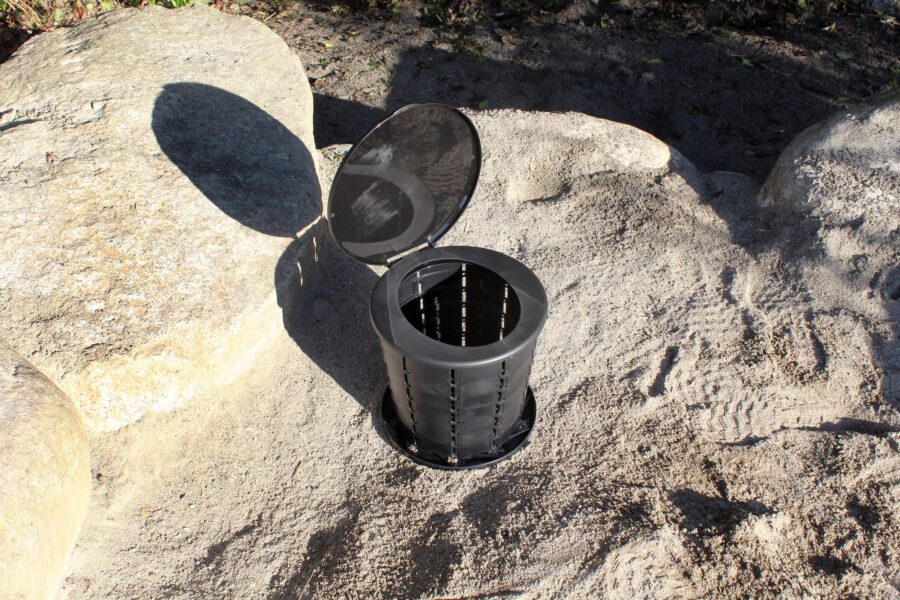
TripTips Retractable Portable Toilet
I’ve become accustomed to the comfort and convenience of portable heads, but they’re too big to carry aboard my canoes and small rowing boats. I’d still like to cruise in…
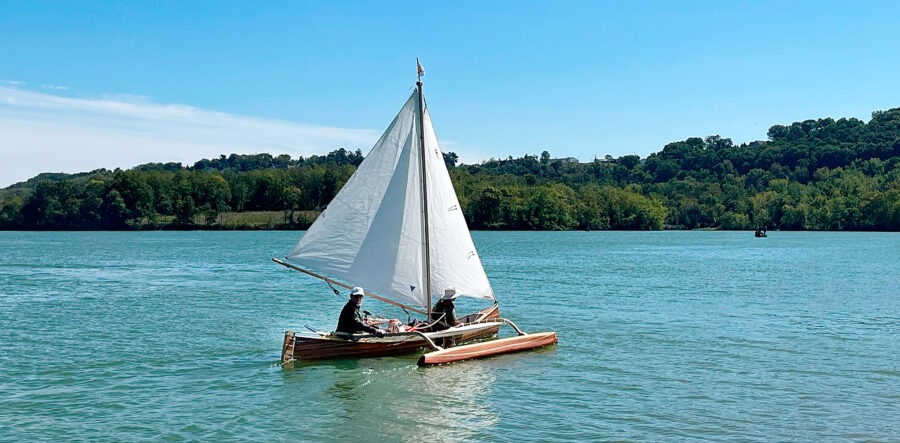
Reader Built Boats
Sailing DORCAS
Erik imagined putting a sailing rig on DORCAS, and as he developed the idea, he came up with some design parameters: The rig had to fit inside the back of…
More Small Boats Annual 2014
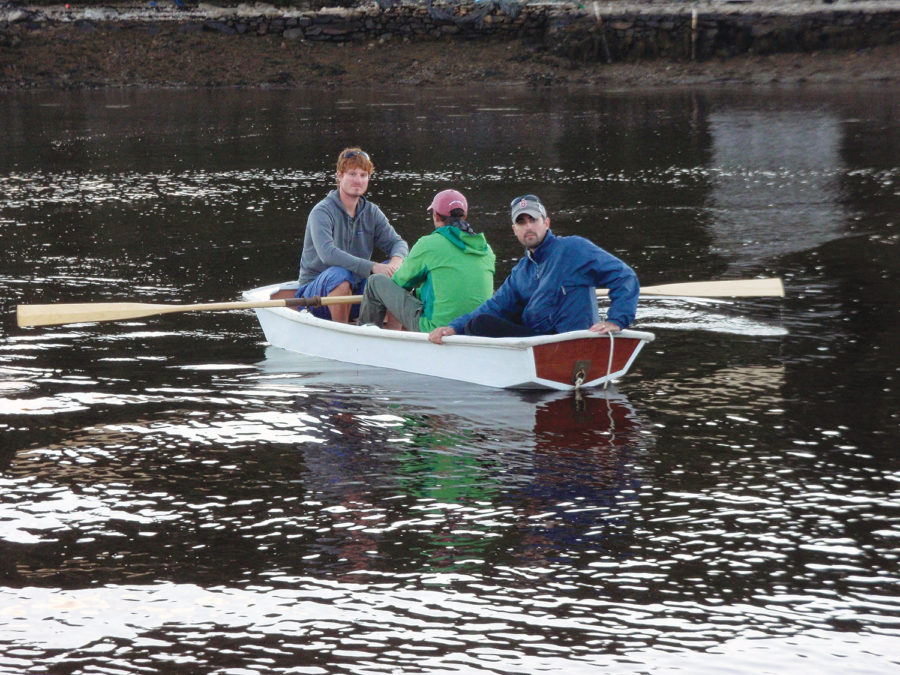
Lit’l Petrel
The diminutive pram, less than 9’ long, has remarkable carrying capacity. A centerline seat allows the person rowing to choose from two stations, depending on the boat’s fore-and-aft trim.
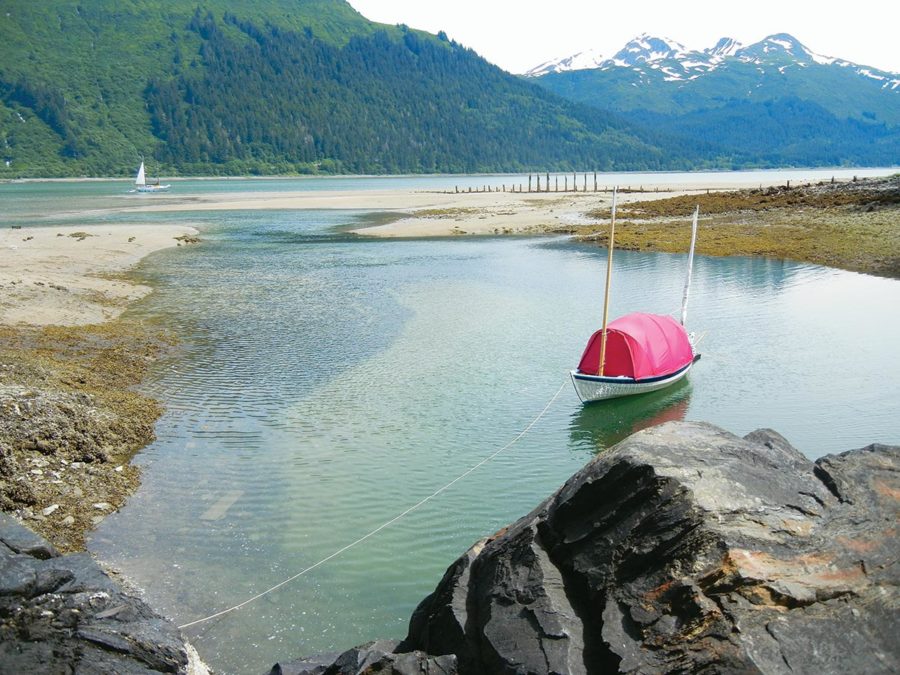
Making a Boat a Home, Part 2
In Southeast Alaska, rocky beaches, insects, and a large resident bear population often make tent-camping on the beach an unappealing option,” James Danner writes from Juneau. “Having a boat tent…
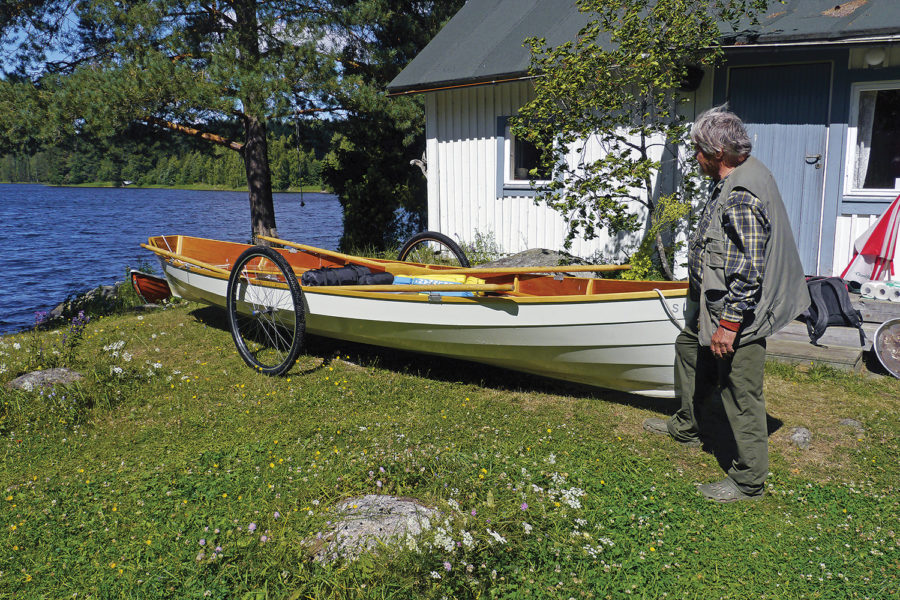
Sinne 610 Expedition Boat
For long-distance rowing trips on Finland’s many lakes, Jouko Koskinen had in mind a lightweight boat that would row very well but could also be fitted with bicycle wheels for…
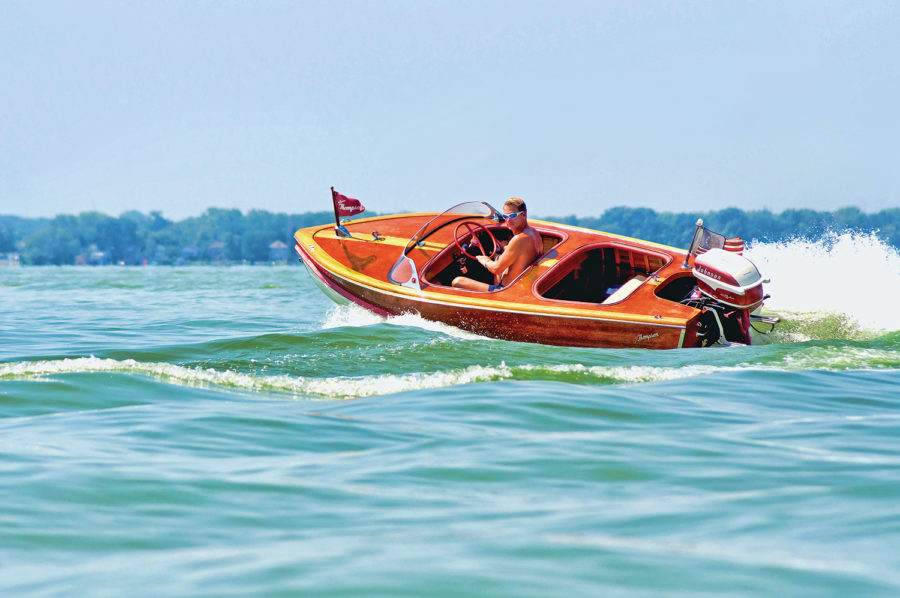
Thompson Thomboy
The author’s THOMMY, a 1955 Thompson Thomboy, is in original condition, with nothing anachronistic or out of place.
Subscribe Today!
Become a subscriber today and you’ll recieve a new issue every month plus unlimited access to our full archive of backlogged issues.
Already a subscriber? Sign In
Subscribe For Full Access
Flipbooks are available to paid subscribers only. Subscribe now or log in for access.


- Forums New posts Unanswered threads Register Top Posts Email
- What's new New posts New Posts (legacy) Latest activity New media
- Media New media New comments
- Boat Info Downloads Weekly Quiz Topic FAQ 10000boatnames.com
- Classifieds Sell Your Boat Used Gear for Sale
- Parts General Marine Parts Hunter Beneteau Catalina MacGregor Oday
- Help Terms of Use Monday Mail Subscribe Monday Mail Unsubscribe
new at this - 17' Spindrift Day Sailor 1 question
- Thread starter bnnauti
- Start date Sep 18, 2013
- Oday Owner Forums
- Day Sailers
Would appreciate any help with this - have an old manual that is not quite clear to me and Sailing for Dummies doesn't cover the type boat particulars. First, my son and I stepped the mast with front and side stays, but I couldn't tell if a back stay is required. Second, hoisted the main and figured out the boom vang rigging, but could not tell if travelers are to be rigged? Thirdly, the jib sheet only had a clip at the top and bottom for the front stay and seemed to have pockets for stays but had none inserted. Shouldn't there be clips all along the luff edge of the jib. And should there be stays inserted. The jib sheet is a Mikibbin and seems fairly new.
Sunbird22358
First, I think you mean JIB, not jib sheet, JIB is the sail, jib sheet is the line(s) used to control the jib. Yes, there should be snaps (AKA hanks) along the luff (leading edge) of the jib, it sounds like your jib was set up for use on a jib-furler (rolls jib up like a window shade to furl.) You can add hanks, they are available from places like Sail-Rite.com or many marine stores, or a local sailmaker could add them for you. The DS jib does not usally have battens (what you call "stays") so this might not actually be a DS jib, it may fit...and can be used if so. I am surprised that a jib set up for roller-furling would have batten pockets though...... battens would prevent roller-furling.....strange! The Spindrift DS I does not have a traveler as standard equipment, one may have been added, but it was not original. I'll include a few pics of a Spindrift DS I for help. The boat with the red jib must have a replacement jib, since that one looks too small. I also posted a pic of my boat's jib to show the hanks (clips).
Attachments

Thank you for the reply. I have begun to believe this is correct; the jib was just sold with the boat. It seems to fit and I've had snaps put in now and will purchase some hanks. And thanks for the great images. If I could request some more help. I'm not sure how to attach the back edge of the main to the boom end. There is a small pulley wheel inside the end of the boom and a long slot on the side of the boom just before the mid boom block. Is the line routed inside the boom to be brought out of the long slot and threaded through the mid-block before going down to the floor block and cleat set-up?
There should be a cleat on the side of the boom to tie off the line (outhaul) that pulls the foot of the sail out along the boom, The mainsheet will be separate from that. I'm not sure if the Spindrift DS I Manual that I have (in PDF form) is the same that you already have, but I'll attach it anyway. It seems that Spindrift used 2 different ways to rig the mainsheet (different years?) so, I will attach a couple of pictures on that. The pic of the mid-boom mainsheet is actually an O'DAY DS II ,but the general idea should be similar.
- ds1man-spindrift.pdf 1 MB Views: 400

Thank you for making the boom (main sheet rigging so clear). I was confused thinking the outhaul had to be tensioned and held for quick release. I do not have the end boom block for a traveler arrangement. Would that be a more desireable rig? Also, should I attach a line to the top of the mast to hold the boom when the main sail is droped. A top haul I think it's called? And should I purchase the small boom vang hardware for this boat?
A few answers: The line from the mast to hold up the boom is called a "topping lift." They can be nice. It's nice to douse the main, and NOT have the boom fall into the bottom of the boat. On the other hand, depending on the geometry of the rig and the amount of roach in the main (curvature in the sail behind an imaginary line from top of sail to aft corner "clew" of sail) the topping lift can catch on battens, and rub and wear the sail. On my small daysailer, the PO had installed a Boomkicker, which holds up the boom. Then I unshackle the main halyards and lead it to a D ring on the aft end of the boom for a more secure hold on the boom, because with downward pressure (as when grabbing the boom to maintain balance) the Boomkicker alone will pop off the boom. It is best to make your topping lift adjustable. This way, you can slack the line while sailing, and also use it to lift the boom on light wind days to set the amount of twist at the top of the main, for more advanced trimming options. Although you do not need a traveller or a vang, these are nice to have. In my opinion, the vang is the most important. The vang is primarily important on broad reaches and runs, to prevent the boom blowing up with wind, putting too much curve in the main. The vang can also be used in conjunction with the main sheet, to approximate the level of control a traveller can exert in shaping the twist of the main (so called "vang sheeting.") Back to your outhaul, the outhaul does need to be adjustable, but not in a "quick release" kind of way. You will decrease outhaul tension to increase the draft in the lower 40% of the sail, for more power in lighter winds, but pull on more outhaul to flatten for less power and more speed in higher winds. Some people use a standard horn cleat for the outhaul. Others have been able to rig a small cam cleat. I happen to have a plastic clam cleat on mine, and some 3/16" Dyneema cored line for my outhaul, which has managed to strip the plastic clam cleat. Mine will be replaced by an aluminum. There's nothing like sailing in stronger winds, hiking to keep the boat level, only to have the sail continually blow out to unacceptable amounts of draft... Hope this helps, Brian
I would suggest Royce's Sailing Illustrated for learning boat rigging. There are many ways to rig a boat, and there are many reasons to rig different ways. Cruisers rig differently than daysailors, and racers rig differently still. Once you look at options and decide your path, you can buy standard blocks, cleats, and fairleads and lines to create any rig you like. Right now, you, like almost everyone else who gets a boat at first, are trying to understand / recreate the Previous Owner's (PO) rig. It may not have been the standard rig, ie. battened, furling jib (!???). My experience with having owned many small sailboats is to set it up so that it is safe and easily sailable at first. Sail it for a season, and make changes to the rigging as you go. After a season, you will probably have it set up the way you like. My advice, spend the time to make it easy and convenient to set up and sail, and you will sail it more. Year after year, I find that when my boat is near the water and fully or almost fully rigged, I will sail several times per week. When that happens, I am happy and proud to have the boat, and the boat is happy and proud to have me! Several very important places to concentrate: mast step, stays/shrouds, centerboard/daggerboard, and rudder. Get these wrong, and your day can go very bad, very fast! So check out Royce's for all the standard control systems, and see how they are rigged. Thanks, Andrew
agprice22 said: I would suggest Royce's Sailing Illustrated for learning boat rigging. There are many ways to rig a boat, and there are many reasons to rig different ways. Cruisers rig differently than daysailors, and racers rig differently still. Once you look at options and decide your path, you can buy standard blocks, cleats, and fairleads and lines to create any rig you like. Right now, you, like almost everyone else who gets a boat at first, are trying to understand / recreate the Previous Owner's (PO) rig. It may not have been the standard rig, ie. battened, furling jib (!???). My experience with having owned many small sailboats is to set it up so that it is safe and easily sailable at first. Sail it for a season, and make changes to the rigging as you go. After a season, you will probably have it set up the way you like. My advice, spend the time to make it easy and convenient to set up and sail, and you will sail it more. Year after year, I find that when my boat is near the water and fully or almost fully rigged, I will sail several times per week. When that happens, I am happy and proud to have the boat, and the boat is happy and proud to have me! Several very important places to concentrate: mast step, stays/shrouds, centerboard/daggerboard, and rudder. Get these wrong, and your day can go very bad, very fast! So check out Royce's for all the standard control systems, and see how they are rigged. Thanks, Andrew Click to expand
- This site uses cookies to help personalise content, tailor your experience and to keep you logged in if you register. By continuing to use this site, you are consenting to our use of cookies. Accept Learn more…
Great choice! Your favorites are temporarily saved for this session. Sign in to save them permanently, access them on any device, and receive relevant alerts.
- Sailboat Guide
Spindrift 46
Spindrift 46 is a 45 ′ 0 ″ / 13.7 m monohull sailboat designed by Ron Hillier/D. Peterson (unauthorized) and built by Formosa Boat Building Co. Ltd. starting in 1982.

Rig and Sails
Auxilary power, accomodations, calculations.
The theoretical maximum speed that a displacement hull can move efficiently through the water is determined by it's waterline length and displacement. It may be unable to reach this speed if the boat is underpowered or heavily loaded, though it may exceed this speed given enough power. Read more.
Classic hull speed formula:
Hull Speed = 1.34 x √LWL
Max Speed/Length ratio = 8.26 ÷ Displacement/Length ratio .311 Hull Speed = Max Speed/Length ratio x √LWL
Sail Area / Displacement Ratio
A measure of the power of the sails relative to the weight of the boat. The higher the number, the higher the performance, but the harder the boat will be to handle. This ratio is a "non-dimensional" value that facilitates comparisons between boats of different types and sizes. Read more.
SA/D = SA ÷ (D ÷ 64) 2/3
- SA : Sail area in square feet, derived by adding the mainsail area to 100% of the foretriangle area (the lateral area above the deck between the mast and the forestay).
- D : Displacement in pounds.

Ballast / Displacement Ratio
A measure of the stability of a boat's hull that suggests how well a monohull will stand up to its sails. The ballast displacement ratio indicates how much of the weight of a boat is placed for maximum stability against capsizing and is an indicator of stiffness and resistance to capsize.
Ballast / Displacement * 100
Displacement / Length Ratio
A measure of the weight of the boat relative to it's length at the waterline. The higher a boat’s D/L ratio, the more easily it will carry a load and the more comfortable its motion will be. The lower a boat's ratio is, the less power it takes to drive the boat to its nominal hull speed or beyond. Read more.
D/L = (D ÷ 2240) ÷ (0.01 x LWL)³
- D: Displacement of the boat in pounds.
- LWL: Waterline length in feet
Comfort Ratio
This ratio assess how quickly and abruptly a boat’s hull reacts to waves in a significant seaway, these being the elements of a boat’s motion most likely to cause seasickness. Read more.
Comfort ratio = D ÷ (.65 x (.7 LWL + .3 LOA) x Beam 1.33 )
- D: Displacement of the boat in pounds
- LOA: Length overall in feet
- Beam: Width of boat at the widest point in feet
Capsize Screening Formula
This formula attempts to indicate whether a given boat might be too wide and light to readily right itself after being overturned in extreme conditions. Read more.
CSV = Beam ÷ ³√(D / 64)
The SPINDRIFT 46 was built by Formosa Yachts using the same molds that built the FORMOSA 46. (1980-1984). R. Hillier, of Brisbane Australia, oversaw the building of this yacht which was to be sold in the US for Bristol yachts of Newport Beach CA. For the Australian market, they were called the HILLIER/PETERSON 46. Hillier ran afoul of designer Doug Peterson who filed a law suit. Hillier died and the suit was shelved. Thanks to SPINDRIFT 46 owner, Mark Warburton, kp44.org owner Jeff, and achivist Graham Court.
Embed this page on your own website by copying and pasting this code.
Discover Related Sailboats

- About Sailboat Guide
©2024 Sea Time Tech, LLC
This site is protected by reCAPTCHA and the Google Privacy Policy and Terms of Service apply.
Spindrift 19
The spindrift 19 is a 18.75ft fractional sloop designed by jim taylor and built in fiberglass since 1982..
The Spindrift 19 is a light sailboat which is a high performer. It is very stable / stiff and has a low righting capability if capsized. It is best suited as a day-boat.
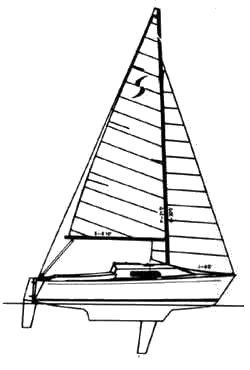
Spindrift 19 for sale elsewhere on the web:

Main features
Login or register to personnalize this screen.
You will be able to pin external links of your choice.

See how Sailboatlab works in video

We help you build your own hydraulic steering system - Lecomble & Schmitt
Accommodations
Builder data, modal title.
The content of your modal.
Personalize your sailboat data sheet
- --> Login or Sign Up
- Login or Sign Up -->
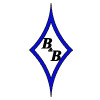
- B&B Annual Messabout
- Capsize Camp
- All Kayaks and Canoes
- Diva 15'8" Kayak
- Grand Diva 17'6" Kayak
- Moccasin 12' Canoe
- Flyfisher 13' Canoe
- Moccasin 14' Canoe
- Moccasin Double 15'6" Canoe
- Birder Decked Canoe 13' and 15'8
- Expedition Sailing Canoe
- All Dinghies and Tenders
- Catspaw Pram
- Spindrift Dinghy
- All Sailboats
- Core Sound 15
- Core Sound 17
- Core Sound 17 Mark 3
- Core Sound 20
- Core Sound 20 Mark 3
- Bay River Skiff 17
- Belhaven 19
- Mini Trimaran
- Class Globe 5.80 Kit
- Princess Sharpie 22'
- Princess Sharpie 26'
- All Powerboats
- All Jessy Skiffs 12-17'
- Jessy 12'
- Jessy 15'
- Jessy 17'
- All Outer Banks Cruisers
- Outer Banks 20
- Outer Banks 24
- Outer Banks 26
- All Ocracoke Center Consoles
- Ocracoke 20
- Ocracoke 20-B
- Ocracoke 24
- Ocracoke 256
- Cape Lookout 28
- All Other Kits and Plans
- Wing Foiling
- "Tractor" Canoe Seat
- Mast Head Floats
- Windvane Self Steering
- All Building Supplies and Tools
- Marine Plywood
- All B&B Epoxy
- Temperature Control for Epoxy
- Epoxy Additives
- All Hardware and Rigging
- All Rigging
- Eyestraps and Fairleads
- Shackles, Hooks and Pins
- All Rudder Hardware
- Pintles and Gudgeons
- Tillers and Accessories
- Hardware kits
- All Masts, Track and More
- 6061-T6 Aluminum Tubing
- Sailtrack and Accessories
- Starboard Mast Plugs
- Wind indicators
- All Electrical
- Battery Monitors
- Solar Power System
- Boarding Ladders
- Beach Rollers
- All Apparel
- B&B Approved Products and Tools
Shop by Brand
B&b yacht designs.
- Amarine Made
- View all Brands
Shop by Category
- Rudder Hardware
- Dinghies and Tenders
Spindrift 10
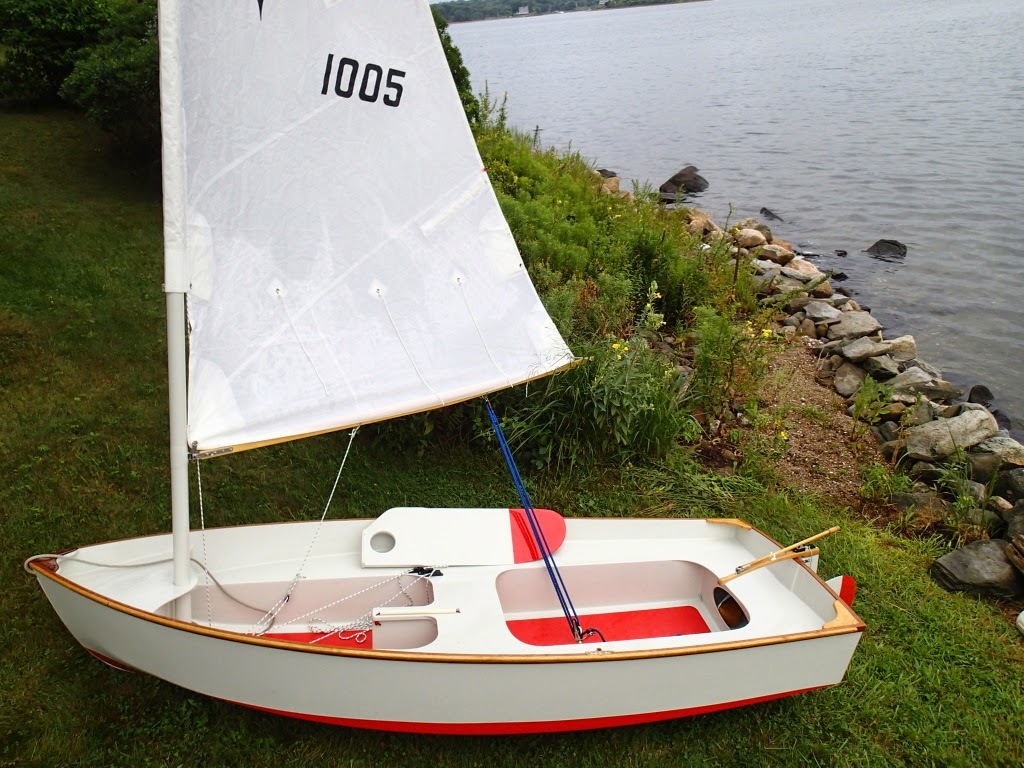
Spindrift 10 Plans

Spindrift Full Size Templates
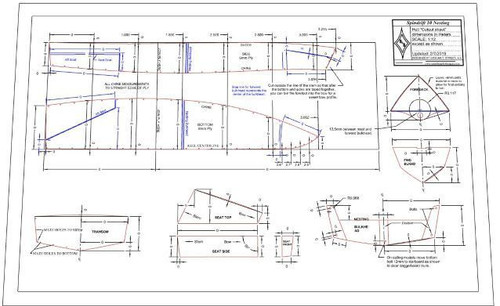
S10-Standard Digital Plans

S10-Nesting Digital Plans

Spindrift 10 CNC Plywood Kit
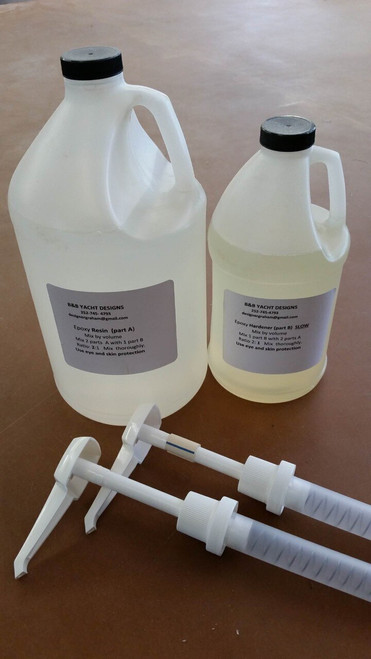
4.5 gal Epoxy and Fiberglass Kit
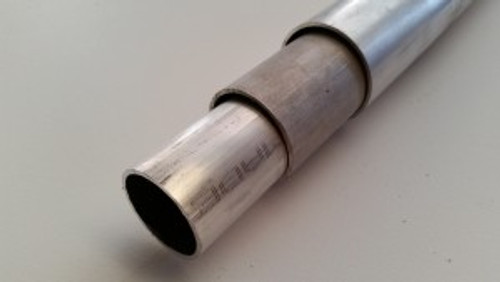
S-10 Mast Kit

Spindrift 10 Reefing Mainsail
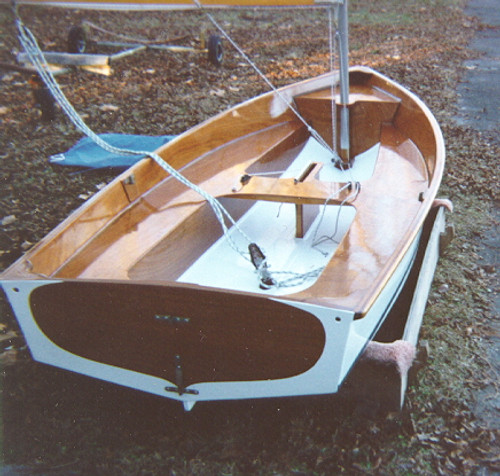
Spindrift Rigging

Spindrift 10 Lines

Small Rudder Hardware Kit

Mini Anderson Bailer
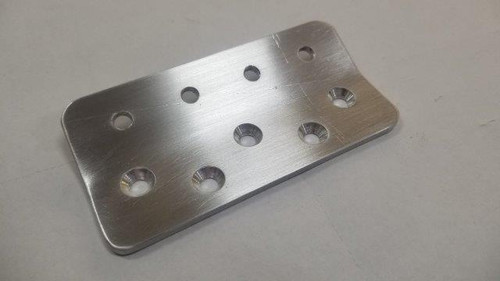
Spindrift mast base plate

IMAGES
VIDEO
COMMENTS
Spindrift boats for sale on YachtWorld are listed for a range of prices from $74,900 on the lower-cost segment, with costs up to $225,000 for the more sophisticated, luxurious yachts. What Spindrift model is the best? Some of the most popular Spindrift models now listed include: 39 ft. Aft Cabin Twin Diesel, 43, AFT CABIN, Aft Cockpit MY and ...
Albums Standard - Nesting - Finished Boats - Videos. New! SPINDRIFT FAQ your questions answered. Choose your model S-9 S-10 S-11 S-12. The Spindrift is a simple to build stitch and glue dinghy offered in four sizes. 9,10,11 and 12 feet. With over 1500 plan sold, Spindrifts have a reputation the world over as a rugged and capable hard dinghy for ...
A boat with a BN of 1.6 or greater is a boat that will be reefed often in offshore cruising. Derek Harvey, "Multihulls for Cruising and Racing", International Marine, Camden, Maine, 1991, states that a BN of 1 is generally accepted as the dividing line between so-called slow and fast multihulls.
1985 Spindrift Pilot House Cutter. US$99,000. Seacoast Yachts | Wilmington, California. * Price displayed is based on today's currency conversion rate of the listed sales price. Boats Group does not guarantee the accuracy of conversion rates and rates may differ than those provided by financial institutions at the time of transaction.
SPINDRIFT preowned sailboats for sale by owner. SPINDRIFT used sailboats for sale by owner.
The Spindrift 22 is a small recreational keelboat, built predominantly of fiberglass, with wood trim. It has a masthead sloop rig, a raked stem, a nearly vertical transom, a transom-hung rudder controlled by a tiller and a fixed stub keel, with a centerboard. It displaces 1,990 lb (903 kg) and carries 600 lb (272 kg) of ballast.
Find Spindrift 43 boats for sale in your area & across the world on YachtWorld. Offering the best selection of Spindrift boats to choose from.
The Spindrift 13 is a recreational sailboat, with the manufactured boats built predominantly of fibreglass, with the deck made as a foam sandwich. It has a fractional sloop rig, a raked stem, a plumb transom, a transom-hung rudder controlled by a tiller and a retractable centreboard. Both the rudder and centreboard are "kick up" designs.
Here we see a 12' model built by Meredithe Stuart-Smith of Castine, Maine. Here we have one member of a family of boats—four in all—doing business under the name of Spindrift and designed by Graham Byrnes of Vandemere, North Carolina. The very first Spindrift was a 10-footer, and was meant purely as a tender to a larger yacht.
35.5' Endeavour E35 Presently on the hard for winter storage at Morgans Marina, New Jersey Asking $35,000
Spindrift 19 is a 18′ 9″ / 5.7 m monohull sailboat designed by Jim Taylor and built by Spindrift One Designs/Rebel Industries (USA) starting in 1982. ... The lower a boat's ratio is, the less power it takes to drive the boat to its nominal hull speed or beyond. Read more. Formula. D/L = (D ÷ 2240) ÷ (0.01 x LWL)³ D: Displacement of the ...
Spindrift 22 is a 21′ 5″ / 6.6 m monohull sailboat designed by Jim Taylor and built by Rebel Industries between 1982 and 1987. ... The lower a boat's ratio is, the less power it takes to drive the boat to its nominal hull speed or beyond. Read more. Formula. D/L = (D ÷ 2240) ÷ (0.01 x LWL)³ D: Displacement of the boat in pounds. LWL ...
Find Spindrift Pilothouse 43 boats for sale in your area & across the world on YachtWorld. Offering the best selection of Spindrift boats to choose from.
Spindrift 17' Day Sailor 1 Iron Mountain. Sep 18, 2013. #1. Would appreciate any help with this - have an old manual that is not quite clear to me and Sailing for Dummies doesn't cover the type boat particulars. First, my son and I stepped the mast with front and side stays, but I couldn't tell if a back stay is required.
The SPINDRIFT 46 was built by Formosa Yachts using the same molds that built the FORMOSA 46. (1980-1984). ... Like the LWL, it will vary with the weights of fuel, water, stores and equipment. A boat's actual draft is usually somewhat more than the original designed or advertised draft. For boats with adjustable keels (centerboards ...
Product Description. The standard Spindrift plans include many 11x17" sheets with all details of construction. The hull panels are carefully dimensioned and designed to be laid on your pre-scarfed plywood sheets and using the straight edges of the plywood for reference. Alternatively we can send full size paper templates of the hull panels and ...
Spindrift 12 Reefing Mainsail. Dacron Mainsail includes battens, sail logo and your hull number and a basic bag.The reefing sail features a zipper running the length of the sleeve and the sail is hoisted with a halyard as the zipper is closed around the mast. This allows the sail to... $560.00. Add to Cart.
Spindrift 15 is a 14′ 6″ / 4.4 m monohull sailboat designed by Ray Greene and built by Spindrift (USA) starting in 1979. ... The lower a boat's ratio is, the less power it takes to drive the boat to its nominal hull speed or beyond. Read more. Formula. D/L = (D ÷ 2240) ÷ (0.01 x LWL)³ D: Displacement of the boat in pounds. LWL: Waterline ...
Spindrift 46 is a 45′ 0″ / 13.7 m monohull sailboat designed by Ron Hillier/D. Peterson (unauthorized) and built by Formosa Boat Building Co. Ltd. starting in 1982. Great choice! Your favorites are temporarily saved for this session. ... The SPINDRIFT 46 was built by Formosa Yachts using the same molds that built the FORMOSA 46. (1980-1984).
The Spindrift 19 is a 18.75ft fractional sloop designed by Jim Taylor and built in fiberglass since 1982. The Spindrift 19 is a light sailboat which is a high performer. It is very stable / stiff and has a low righting capability if capsized. It is best suited as a day-boat.
Boats for sale ⁄ / Sail ⁄ / Spindrift; Sail Spindrift boats for sale. Create Search Alert. Clear Filter Make / Model: All Spindrift Category: All Sail. Location. By Radius. By Country. country-all. All Countries. Country-US. United States. All. All 25 miles 50 miles 100 miles 200 miles 300 miles 500 miles 1000 miles 2000 miles 5000 miles.
1985 Spindrift SUNDECK TRAWLER. US$89,000. The Shoreline Yacht Group | Redondo Beach, California. Request Info. <. 1. >. * Price displayed is based on today's currency conversion rate of the listed sales price. Boats Group does not guarantee the accuracy of conversion rates and rates may differ than those provided by financial institutions at ...
Spindrift 10 Reefing Mainsail. Dacron Mainsail includes battens, sail logo and your hull number and a basic bag.The reefing sail features a zipper running the length of the sleeve and the sail is hoisted with a halyard as the zipper is closed around the mast. This allows the sail to... $520.00. Add to Cart.